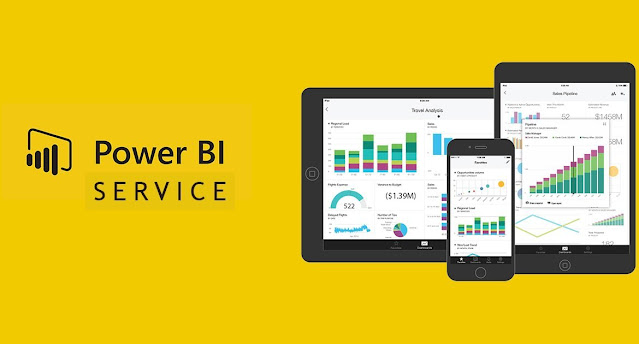How to Maximize ROI with Effective AEM Implementation

Adobe Experience Manager (AEM) is a leading content management system that enables businesses to create, manage, and deliver personalised digital experiences across multiple channels. Effective AEM implementation service can transform the way businesses interact with their customers, ultimately leading to increased revenue and return on investment (ROI).
In this blog, we will explore how to maximise ROI with effective AEM implementation by outlining the key steps businesses need to take to achieve their goals.
Understand Your Business Goals and Objectives
The first step towards maximising ROI with effective AEM implementation is to understand your business goals and objectives. Defining your goals and objectives is critical to ensuring that the AEM implementation aligns with your business needs. Start by asking yourself questions such as, "What are my business goals?", "What are the objectives I want to achieve through AEM implementation?" and "How can AEM help me achieve these objectives?".
Once you have a clear understanding of your business goals and objectives, create a roadmap for AEM implementation. This roadmap should outline the key steps and milestones you need to achieve to implement AEM successfully. It should also include a timeline, budget, and resources required to achieve these goals.
Optimise Content Creation and Management
Creating and managing high-quality content is critical to ensuring effective AEM implementation. High-quality content is not only engaging but also helps to build trust with your customers. AEM offers several features and tools that enable businesses to create and manage high-quality content efficiently.
One of the most effective ways to manage content in AEM is by using templates, workflows, and automation tools. Templates enable businesses to create consistent and branded content, while workflows and automation tools help to streamline the content creation process. Additionally, AEM offers features such as digital asset management, which enables businesses to organise and optimise their digital assets efficiently.
Streamline Collaboration and Workflow Processes
Collaboration and workflow processes are critical to ensuring effective AEM implementation. AEM offers several collaborative tools that enable businesses to work seamlessly across teams, departments, and locations. These collaborative tools can help to streamline workflow processes, reduce errors, and improve efficiency.
To optimise workflow processes in AEM, businesses should consider using features such as task assignments, approvals, and notifications. These features enable businesses to manage workflow processes efficiently, reducing the time and effort required to complete tasks.
Additionally, businesses should consider integrating AEM with other collaborative tools, such as Slack or Microsoft Teams, to enable seamless collaboration across teams.
Personalise User Experience
Personalisation is another critical factor that businesses need to consider when implementing AEM. Personalisation enables businesses to create customised experiences for their customers, which can help to improve engagement and ultimately lead to increased ROI. AEM offers several personalisation features that enable businesses to deliver personalised experiences across multiple channels.
To use personalisation features effectively, businesses should start by identifying their target audience and creating user personas. User personas can help businesses understand their customers' needs, preferences, and behaviours, enabling them to create personalised experiences that resonate with their customers.
Additionally, businesses should use AEM's personalisation features, such as targeting, segmentation, and recommendations, to deliver personalised experiences across multiple channels.
Optimise Content Delivery Across Channels
Delivering content across multiple channels, such as mobile, social media, and email, is critical to ensuring effective AEM implementation. AEM offers several features and tools that enable businesses to deliver content across multiple channels efficiently.
To optimise multi-channel delivery, businesses should consider using features such as responsive design and mobile optimisation. Responsive design enables businesses to deliver content that adapts to different screen sizes, while mobile optimisation ensures that content is optimised for mobile devices.
Additionally, businesses should consider leveraging advancements in technology, such as artificial intelligence and machine learning, to deliver personalised and effective content across multiple channels.
Track Performance Metrics
Tracking performance metrics is critical to ensuring effective AEM implementation and maximising ROI. Performance metrics such as engagement rate, conversion rate, and bounce rate can provide valuable insights into how customers are interacting with your content. By tracking these metrics, businesses can identify areas of improvement and optimise their AEM implementation accordingly.
To track performance metrics effectively, businesses should start by setting clear goals and objectives. They should then identify the metrics that align with these goals and objectives. Businesses should use AEM's analytics and reporting features to track these metrics, enabling them to make data-driven decisions and optimise their AEM implementation accordingly.
Implement SEO Best Practices
Implementing SEO best practices is critical to ensuring effective AEM implementation and maximising ROI. SEO enables businesses to improve their search engine rankings, increasing visibility and ultimately leading to increased website traffic and revenue. AEM offers several features and tools that support SEO efforts, making it easier for businesses to implement SEO best practices.
To implement SEO best practices effectively, businesses should start by conducting keyword research and optimising their content accordingly. They should also ensure that their website is structured correctly, with clear and concise URLs, titles, and meta descriptions. Additionally, businesses should use AEM's SEO features, such as sitemaps, robots.txt, and canonical URLs, to ensure that their website is optimised for search engines.

Implementing AEM in Legacy Systems
When it comes to adopting AEM, many businesses grapple with the integration of AEM into their existing legacy systems. Implementing AEM seamlessly into legacy systems is crucial for maximising ROI. This integration should not only ensure smooth data migration and synchronisation but also facilitate efficient workflow management.
By bridging the gap between AEM and legacy systems, businesses can harness the full potential of AEM's capabilities without disrupting their existing infrastructure. Implementing a robust and scalable framework for integration can significantly enhance the overall effectiveness of AEM implementation, contributing to improved operational efficiency and a higher ROI.
Harnessing Data Analytics for Continuous Improvement
Data analytics plays a pivotal role in maximising ROI through effective AEM implementation. Businesses should leverage data analytics to gain deep insights into user behaviour, content performance, and overall system functionality.
By monitoring and analysing key performance metrics, businesses can identify areas for improvement, optimise content strategies, personalise user experiences, and refine their AEM implementation continuously.
The data-driven approach allows businesses to make informed decisions, adapt to changing market dynamics, and proactively address any challenges, thereby ensuring that their AEM implementation remains aligned with their ROI objectives.
Security Considerations
Security is a critical factor that businesses need to consider when using AEM. Insecure AEM implementation can lead to data breaches and other security risks, ultimately leading to significant financial and reputational damage. AEM offers several security protocols that businesses should consider when implementing AEM.
To prioritise security considerations, businesses should start by conducting a security risk assessment. This assessment should identify potential security risks and vulnerabilities, enabling businesses to implement appropriate security protocols and measures.
Additionally, businesses should ensure that their AEM implementation is compliant with industry standards and regulations such as GDPR and HIPAA.
Conclusion
Effective AEM implementation can transform the way businesses interact with their customers, ultimately leading to increased revenue and ROI. By following the key steps outlined in this blog, businesses can maximise ROI with effective AEM implementation.
From understanding their business goals and objectives to optimising content creation, collaboration, personalisation, and delivery, businesses can take a data-driven approach to AEM implementation and achieve their goals.
As always, we encourage our readers to implement these best practices and achieve their business objectives through effective AEM implementation.
Source: https://ivedatadriven.godaddysites.com/f/how-to-maximize-roi-with-effective-aem-implementation


Comments
Post a Comment